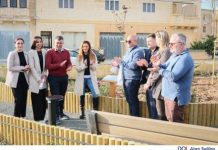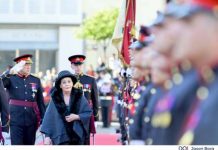
Parliamentary Secretary for Fisheries, Aquaculture and Animal Rights, Alicia Bugeja Said, has announced a new project in favour of the diversification of fish species in aquaculture which will focus on pagri and açol.
This project, which is co-financed by European funds, is being carried out by the Aquatic Resources Malta agency at the agency’s laboratory in St. Lucian’s Tower. This project focuses on the introduction of two new species into local aquaculture: the Greater Amberjack (Seriola dumerili) and the Red Porgy (Pagrus pagrus).
The parliamentary secretary expressed her satisfaction with the work being carried out by this agency, which is leading Malta to continue making important steps in the development of the aquaculture sector through these types of projects. She explained that the main objective of this project is to help strengthen the resilience and competitiveness of Maltese aquaculture, through research and innovation in areas such as reproduction, breeding, nutrition and fish health.
“This project demonstrates our country’s ongoing commitment to maintaining the aquaculture sector as sustainable, innovative and adapted to the challenges of the future. The work being done not only prepares the industry for global competition, but also ensures that Malta remains among the countries that are investing in advanced research for fish production through more efficient and sustainable methods”, concluded Parliamentary Secretary Bugeja Said.
The Chief Executive Officer of the Aquatic Resources Malta Agency, Frank Fabri, explained that the project began with a call for interest addressed to MFA and MFB fishermen, where those who participated were asked to collect samples of açol and pagri between September and October 2024. These samples were quarantined until they reached an appropriate size, then transferred to special tanks so that the first phase of the reproduction process could take place. Fabri said that the final goal of this process is to obtain fish eggs, raise larvae, and thus complete the full cycle of reproduction of these species in local aquaculture facilities.
“As part of the initiative, a market study is also being carried out to find and acquire specialized equipment that will enhance the capacity of laboratories and fish farming facilities. This investment will ensure the long-term sustainability of this innovative project”, concluded Dr Frank Fabri.
![]()







